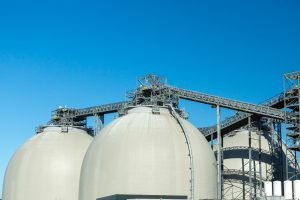Figures show that 2016 may not have been a white Christmas – but it certainly was a green one.
More than 40% of the electricity generated on Christmas Day came from renewable sources – making it the greenest Christmas ever for energy generation.
On average, 12.4GW of electricity generated came from green sources – 63% more than in 2015 when just 25% of the electricity generated came from renewables, and up 195% compared to five Christmases ago in 2012 when just 4.2GW (or 12% of the energy generated) came from renewables.
75% of the renewable energy produced on Christmas Day came from wind turbines with 9.4GW generated on average – equivalent to 31% of all the electricity generated that day. This was close to the record for wind generation reached just a couple of days earlier on Friday December 23 2016 when at its peak 10.8GW of power was generated by wind.
The figures from Electric Insights, commissioned by Drax, show that biomass generation has also increased from just 0.5GW on average on December 25 2012, to 2GW at Christmas in 2016.
This comes just days after the European Commission approved the UK government’s decision to award Drax Power a Contract for Difference (CfD) to upgrade the third of its six units at its power station in North Yorkshire to run on wood pellets, from coal.
Andy Koss, Drax Power CEO said:
“These Christmas figures show that the UK energy system really is changing. Renewables are increasingly vital to the UK’s energy mix as we decarbonise and move away from coal.
“Since upgrading half of the power station to run on wood pellets, three million households are powered with renewable energy generated by Drax. We provided 20% of the UK’s renewable power in the first half of 2016.
“Biomass allows for more continuous power generation than other intermittent renewables, which is important for security of supply. With the right conditions, we can do even more, converting further units at Drax to use sustainable biomass in place of coal and through rapid response gas projects to plug the gaps created by intermittent renewables.”
Drax is developing plans to build four state-of the-art rapid response open cycle gas turbine (OCGT) power stations, which could, at the flick of a switch, be running at capacity within ten minutes. These more flexible plants will provide system support to the Grid and ‘plug the gaps’ created by intermittent renewables like solar and wind.
The proposed rapid response gas projects would further assist in getting coal off the system and so help the Government achieve carbon saving targets.
Andy Koss commented:
“It’s important to have the right mix of energy generation to ensure we are decarbonising, whilst also keeping the lights on and the costs down. This is the next step for us in helping to change the way energy is generated, supplied and used for a better future.”
ENDS
Contact
Ali Lewis, Head of Media Relations
01757 612165
[email protected]
Notes to Editors
Table comparing the average electricity generation from renewables on Christmas Day for the last five Christmases:
| Christmas Day | Average renewable generation* | % of electricity generated by renewables* |
| 2016 | 12.4GW | 41.3% |
| 2015 | 7.6GW | 25.25% |
|
2014 |
5.5GW | 17.03% |
| 2013 | 5.9GW | 17.66% |
| 2012 | 4.2GW | 12.5% |
*These figures include the electricity generated from wind, solar, hydro and biomass.
- The findings come from Electric Insights, a realtime dashboard of Great Britain’s electricity demand, supply, price and environmental impact. Quarterly Electric Insights reports are produced independently by researchers from Imperial College London. Commissioned by Drax, they look at Britain’s publicly available electricity data and aims to inform the debate on the electricity system.
- The government has set out proposals to end coal-fired generation by 2025 as part of its plan to stimulate more clean energy generation.
- The European Commission’s decision gives approval to the UK government’s support for the upgrade of Drax power station from coal to biomass, and marks the culmination of a £650 million investment. Drax power station, is the largest carbon saving project in Europe, saving 12 million tonnes of carbon each year.
- Total emissions are calculated from British electricity consumption in tonnes per hour (including emissions from imported power), and the ‘carbon intensity’ of electricity – total emissions divided by total demand in grams per kilowatt hour (g/kWh).
About Drax
Drax Group plc plays a vital role in helping change the way energy is generated, supplied and used as the UK moves to a low carbon future. Drax operates the largest power station in the UK and supplies up to 8 percent of the country’s electricity needs. The energy firm converted from burning coal into becoming a predominantly biomass-fuelled electricity generator. In addition to being one of the largest producers of renewable powers in the UK, Drax also holds the distinction of being Europe’s single largest decarbonisation project. Its 1,400-strong staff operate across three principal areas of activity – electricity generation, electricity sales to business customers and compressed wood pellet production.
The Group employs around 1,400 people and also includes:
Drax Biomass, based in the US and manufacturers compressed wood pellets produced from sustainably managed working forests.
Haven Power, the Group’s retail arm, providing business electricity contracts that are simple, flexible and designed to customers specific requirements.
Billington Bioenergy, is one of the leading distributors of wood pellets for sustainable heating in the UK.
For more information visit www.drax.com/uk










